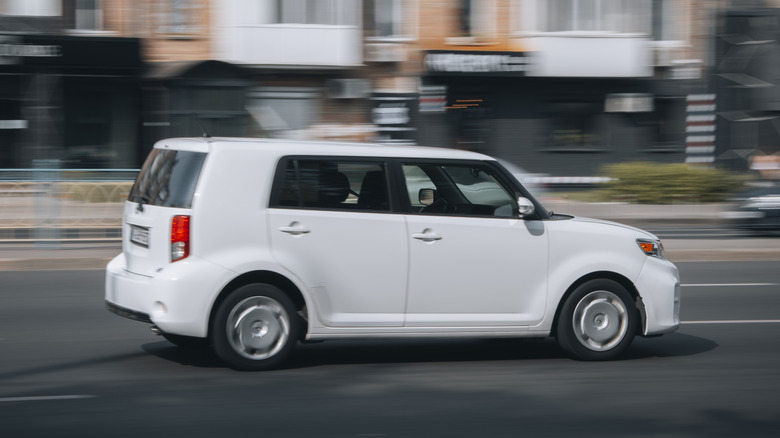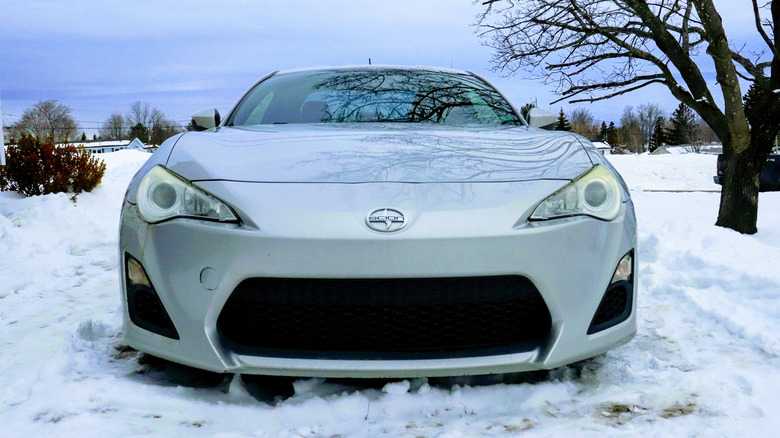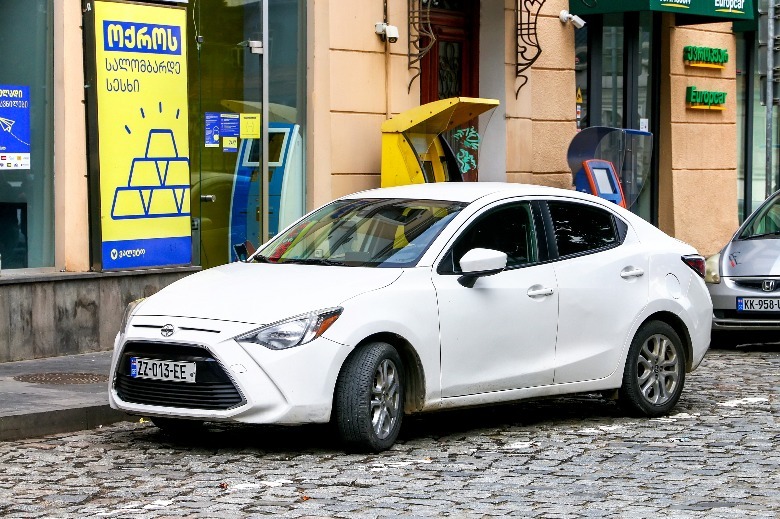Why Toyota Decided To Dissolve The Scion Brand
You probably heard about Toyota's "Project Genesis" initiative in the late 90s, and how the project came crashing to a halt, no thanks to the short-lived Toyota Echo. However, Toyota didn't make it to the top by giving up, so it reconsolidated its plan to attract younger buyers to the Toyota family with "Project Exodus" by 1999, planting the seed that would become the Scion brand in 2003.
The first offerings from Scion — the xA, xB, and tC coupe — came with no-haggle pricing and a confusing array of aftermarket parts to make each Scion unique to its customer. The Scion brand and "Project Exodus" lasted longer than Toyota's initial attempt, but the automaker pulled the plug by 2016. By 2017, Toyota absorbed the remaining Scion models into its North American lineup.
The Scion FR-S, iA, and iM became the Toyota 86, Toyota Yaris iA, and Toyota Corolla iM, respectively. As for Scion, the brand faded into obscurity, never to be heard from again except for the used car marketplace.
Why did Toyota dissolve Scion?
Like "Project Genesis" and the Toyota Echo, Scion came off to a roaring start. It sold more than 173,000 cars in 2006, but sales tumbled by 2013 as the brand sold fewer than 69,000 cars. The trend continued in 2014 and 2015, when Scion sold only 58,000 and 56,000 cars, respectively. It didn't help that Scion sold a rebadged Mazda2 (Scion iA) and the European-bred Toyota Auris (Scion iM) hatchbacks, which drew praises for their refined styling and sporty driving endeavors.
The reason Toyota discontinued Scion is not because it failed in its mission of attracting younger buyers into the fray. Back in the day, the average age of a Scion owner was 37, and about 70% of sales were from buyers who had never bought a Toyota before purchasing a Scion. However, market preference changes with time, and Scion found itself in trouble when its intended market lost its penchant for attention-grabbing cars.
Suddenly, those young buyers grew up and had no interest in over-amplified sound systems, undercarriage neon lights, supercharger kits, or funky wheels. Practical and sensible cars became the new trend, and Scion got lost in translation. It became a learning experience for Toyota, and the brand has since regained its strength by expanding its portfolio and staying genuine to its mantra of reliability.
"Scion has allowed us to fast-track ideas that would have been challenging to test through the Toyota network," said former Toyota North America CEO Jim Lentz in a 2016 statement, perhaps cushioning the blow that led to Scion's demise. "This isn't a step backward for Scion; it's a leap forward for Toyota."


